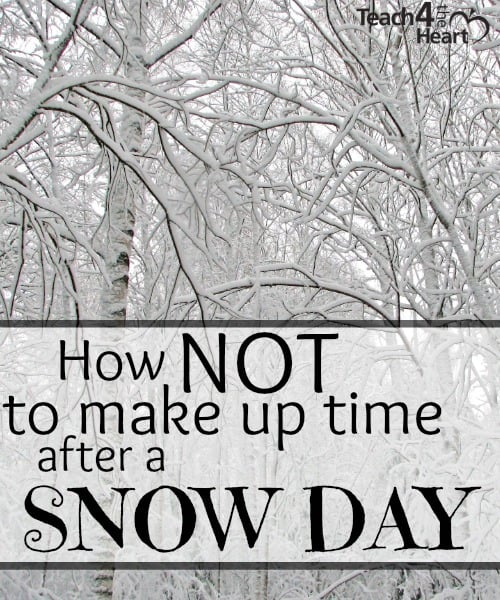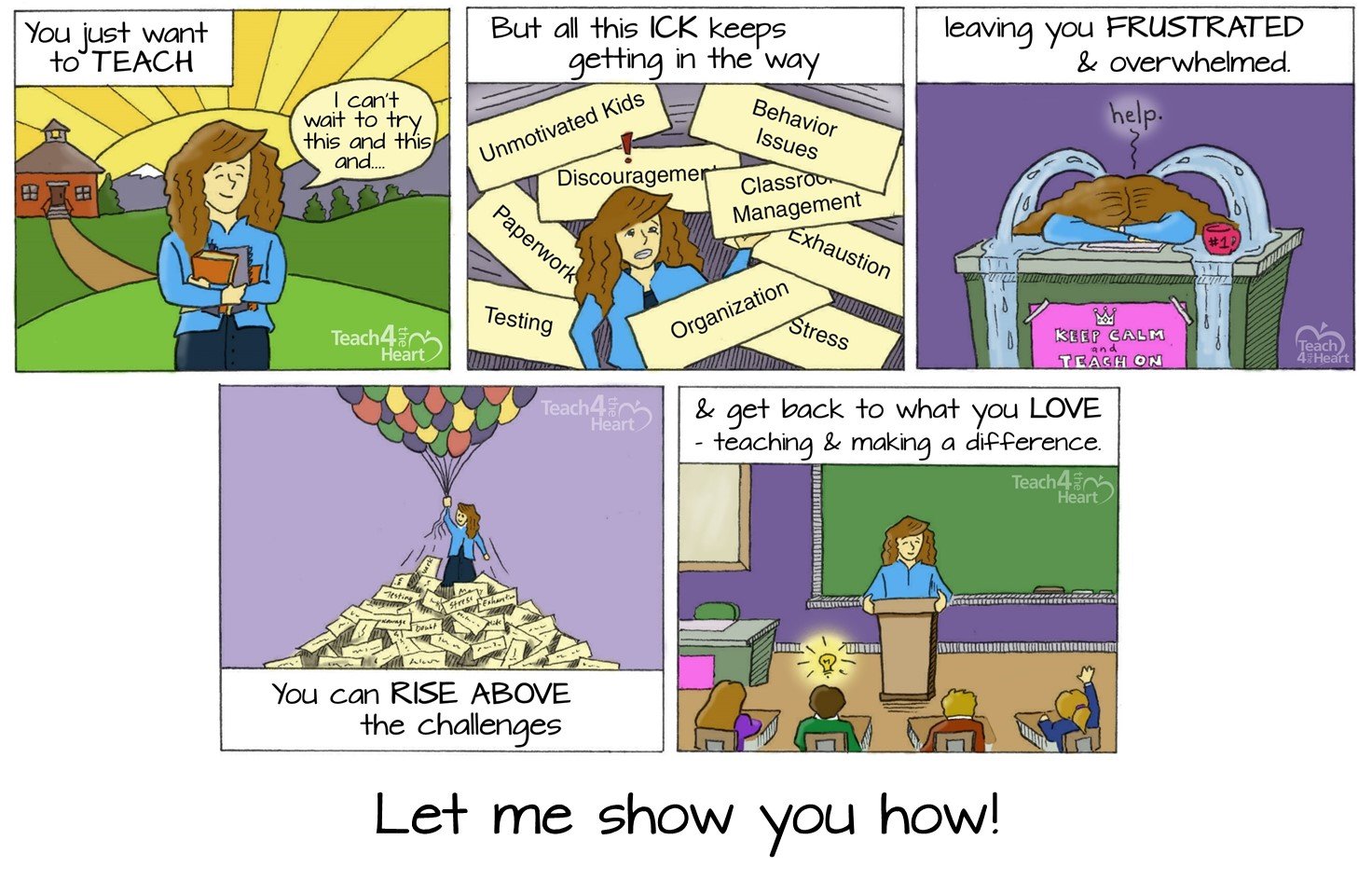We teachers are arguably even more excited than the kids when we find out there’s a snow day. But despite the joy of an extra day off, we know we’re going to have our work cut out for us when we return because getting back on track after a snow day is no easy task.
Despite the challenge, making up time after a snow day doesn’t have to be mission impossible. In fact, there’s a semi-simple method I use that tends to work pretty well.
But before we get to that, let’s take a look at some methods that are not such a good idea.
After a Snow Day, Do NOT…..
- Try to cram as much teaching as possible in the next day. If you try to get everything back on schedule right away, it’s not going to be pretty. You will be stressed, the kids will be stressed, you’ll be talking so fast no one will understand you, and very little learning will actually get done.
- Just keep going as if nothing happened. If you just keep plodding along and figure you’ll just get as far as you can and whatever’s left at the end of the year was just not meant to happen, you’re doing your kids a disservice. Often the last chapters of the curriculum contain important or relevant information that you really should be discussing. Wouldn’t it be better to skip a less important topic along the way and actually have time for that last chapter?
- Give extra homework to get caught up. Please don’t. A tiny increase may be okay, but dumping an entire day (or two)’s worth of lessons on them is just not right. And imagine how overwhelmed they’ll be if all their teachers decide to take that approach.
- Throw up your hands in despair. It really is possible to get back on track. Here’s what I recommend…..
To Get Back on Track After a Snow Day
The key to getting back on track is looking ahead at the next few weeks and identifying the best spot to either cut out or shorten a lesson (or lessons).
For example, if I’m a math teacher, I might look at the upcoming lessons and see there’s a section in the next chapter that’s not as important as some of the other topics. So I decide I’ll skip that one. I make a note and move on, knowing I’ll be back on track once we pass that point.
Or, maybe I decide to combine two lessons. This doesn’t mean I’m going to cram two lessons into one day. It means I’m going to pick the most important parts of both lessons and focus on those, leaving out a good chunk of less important details.
It’s a simple concept, but so many teachers don’t use it. And isn’t it so much better to strategically plan what to cut out than to simply not get to the last two chapters in your curriculum?
Look at your upcoming lessons, and ask yourself which of these topics is the least important.
So take a minute, look at your upcoming lessons, and ask yourself which of these topics is the least important. And that’s the one that should go.
Oh, and by the way, if you don’t have some type of curriculum map or course pacing guide, click here to discover how to create one in five simple steps. (It will seriously be a HUGE help if you want to stay on track.)
Background photo by Marko_K




When I plan the curriculum map before the beginning of the year, I build in 2-3 extra days at the end of each marking period. Then when there are unexpected field trips, fire drills, assemblies, sick days, snow days, or other interruptions — I am not behind schedule. Sometimes, I end up a week ahead of schedule later in the year, so that allows me to do more fun activities or go back and review a concept.
Love this!